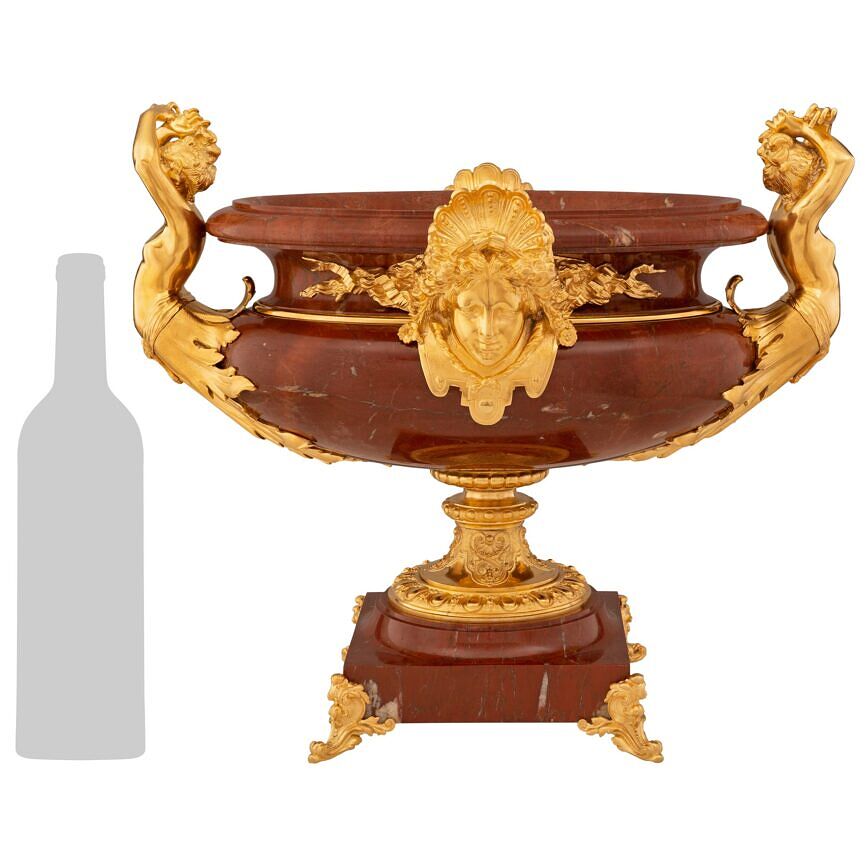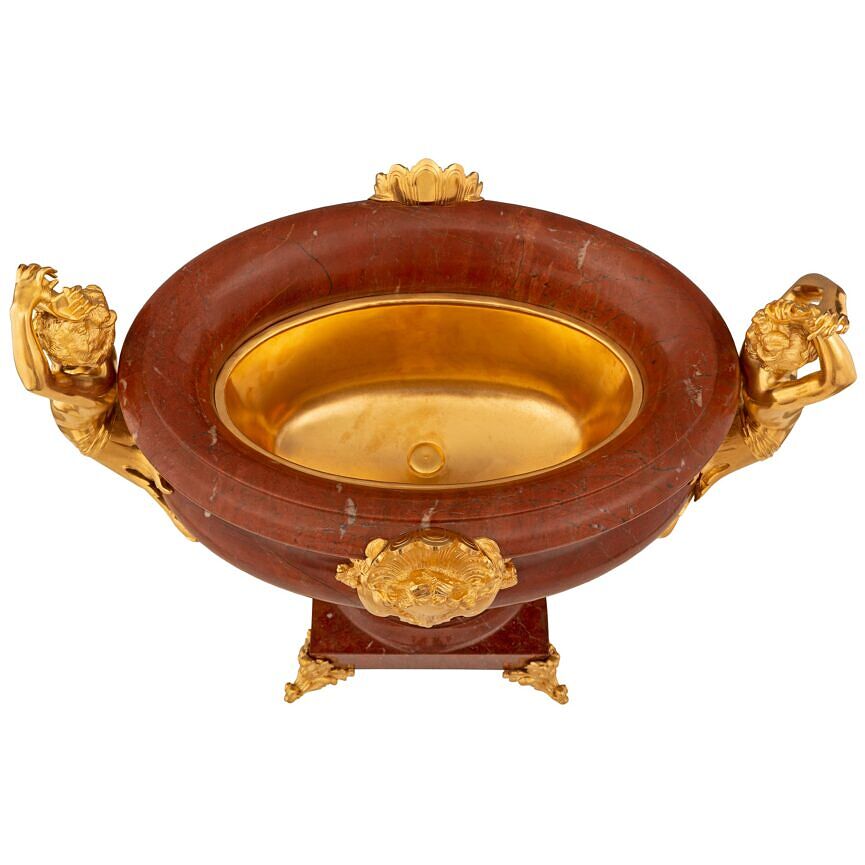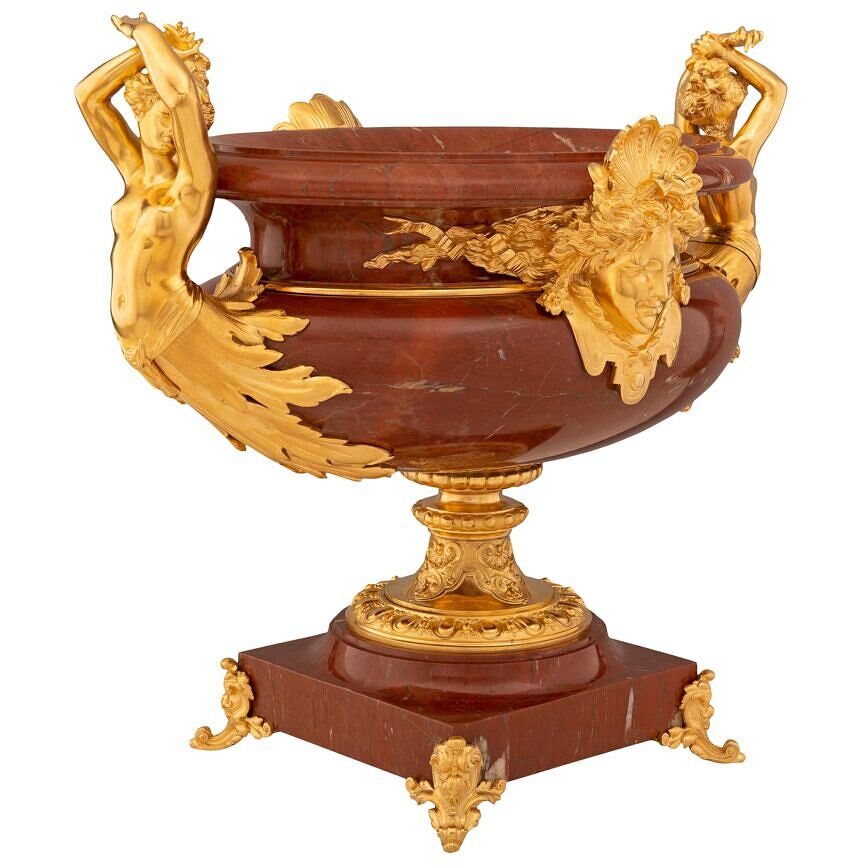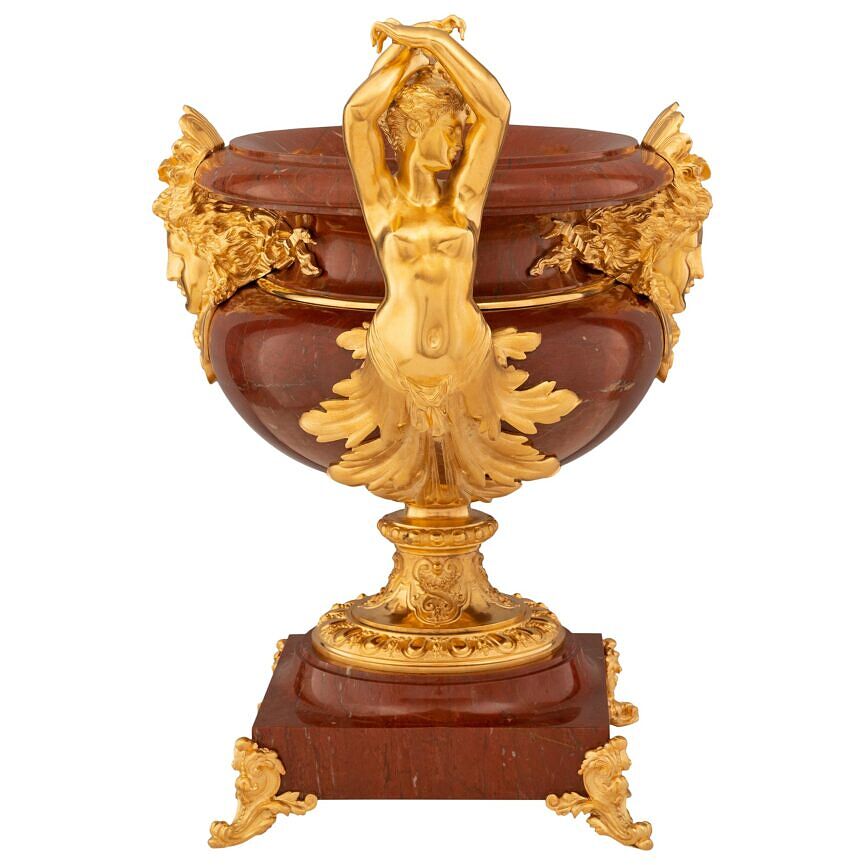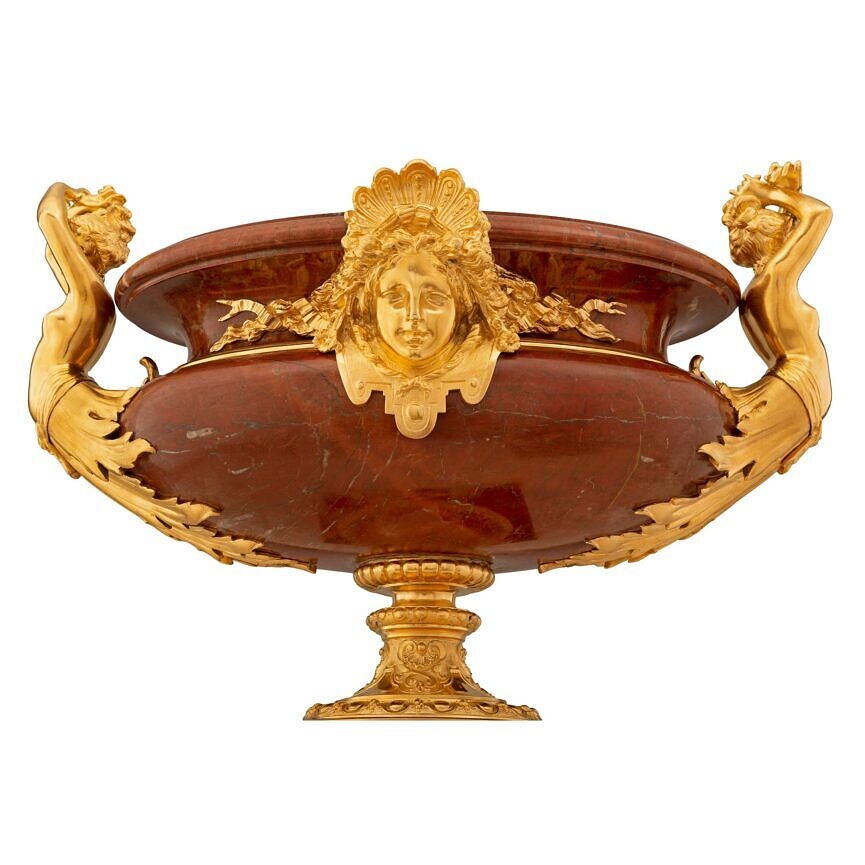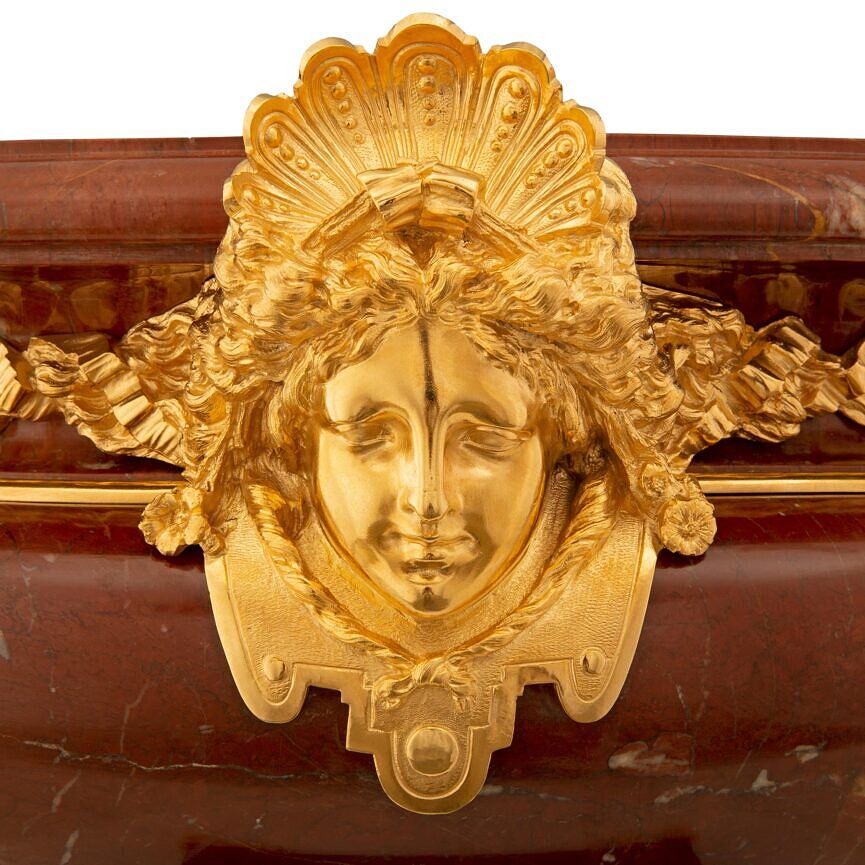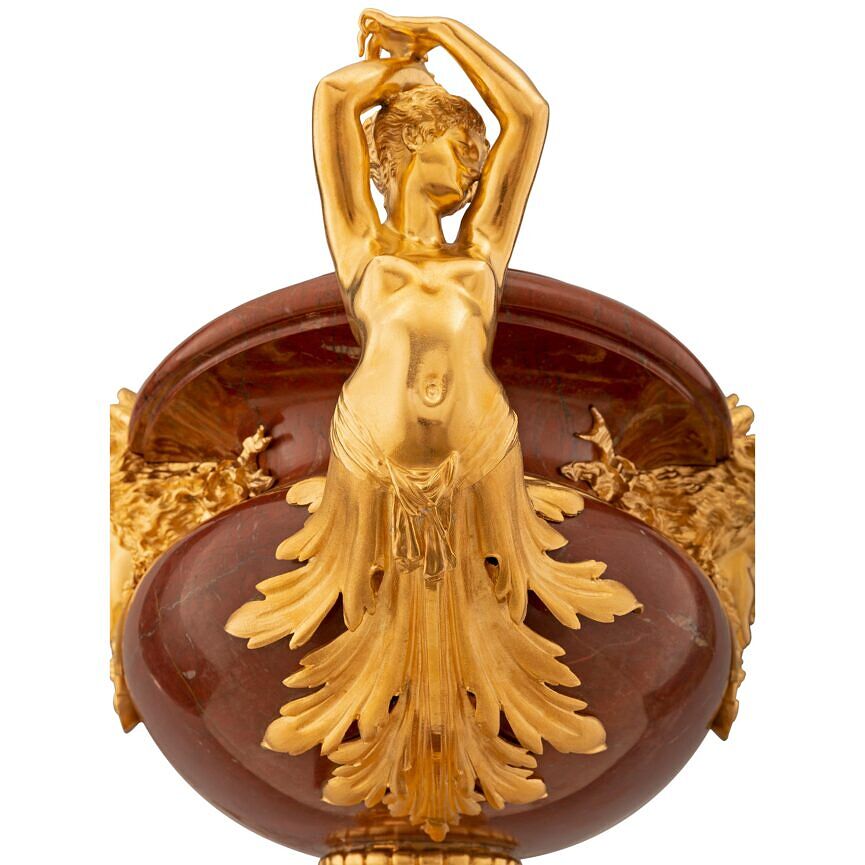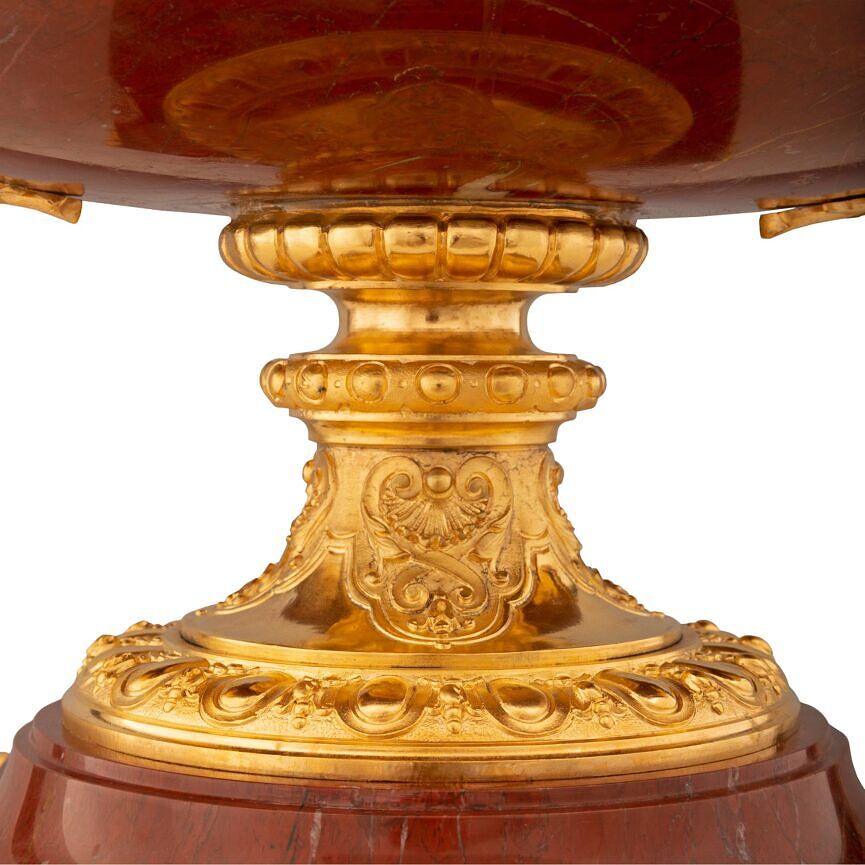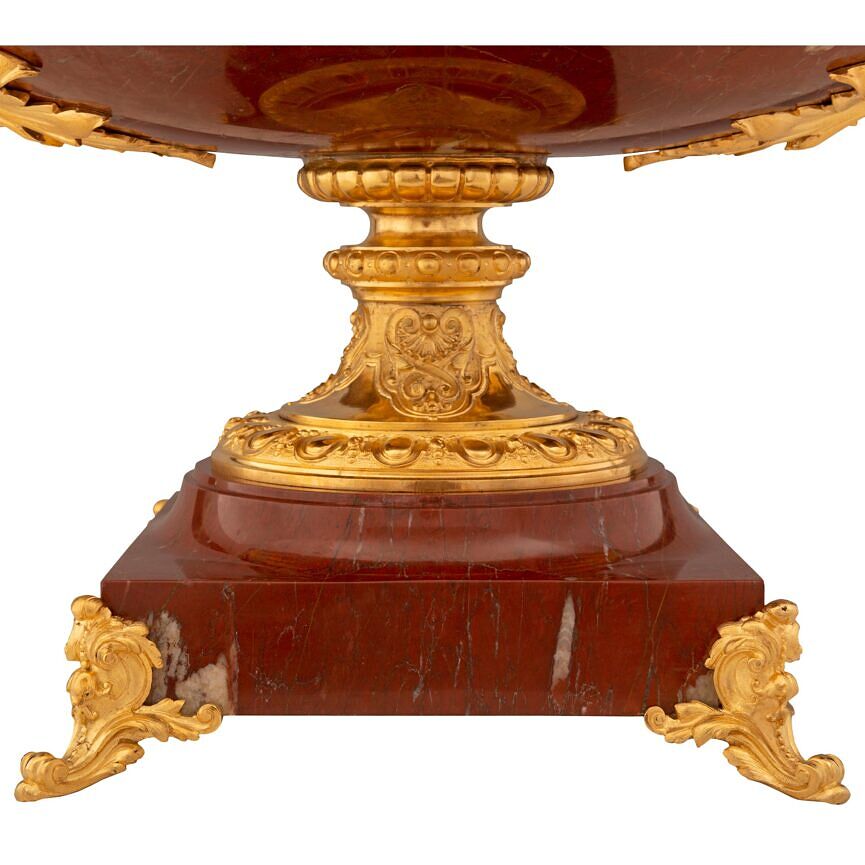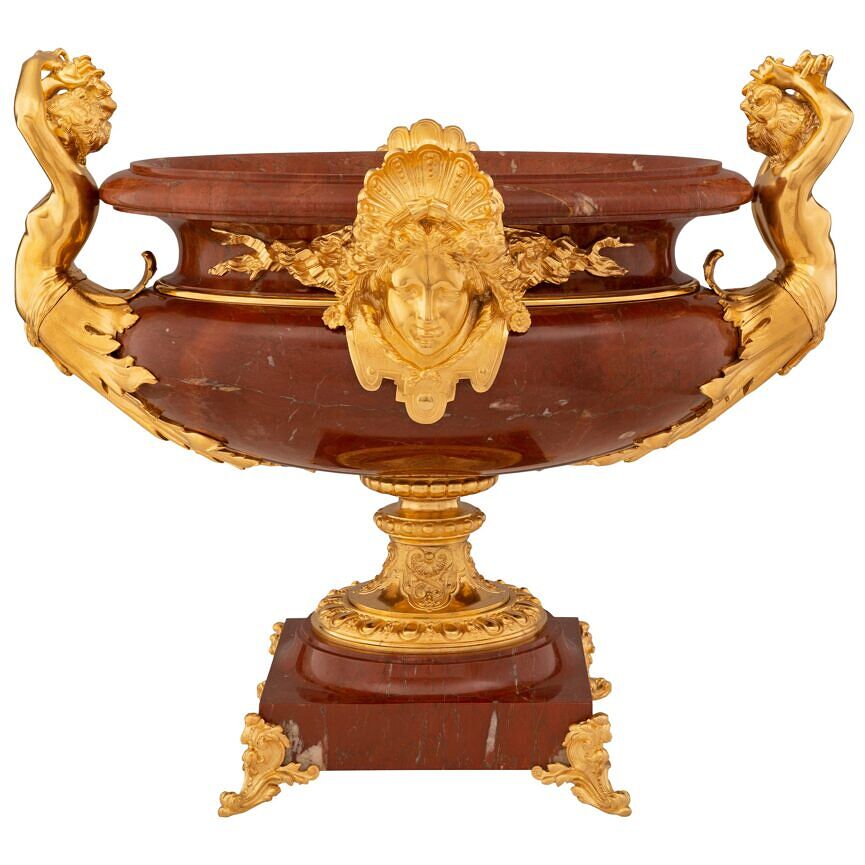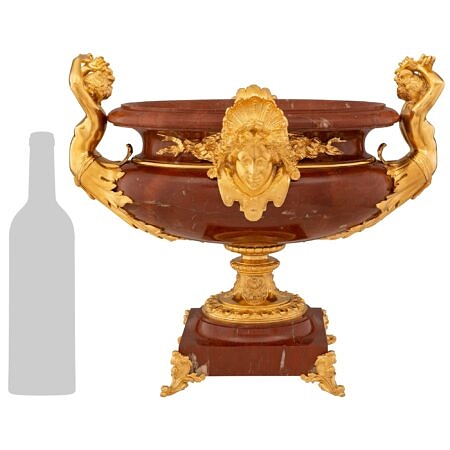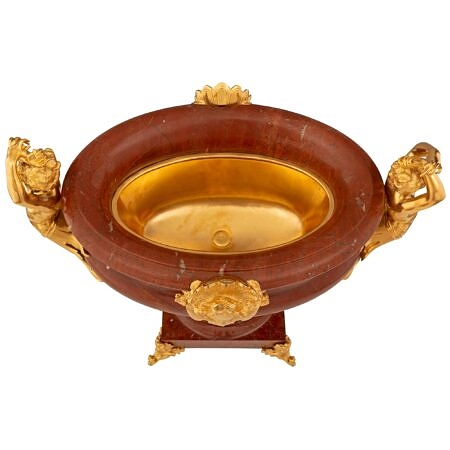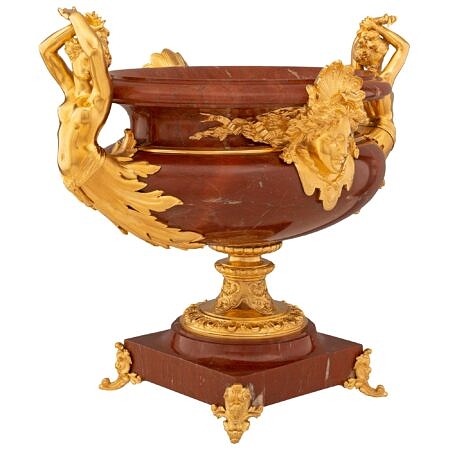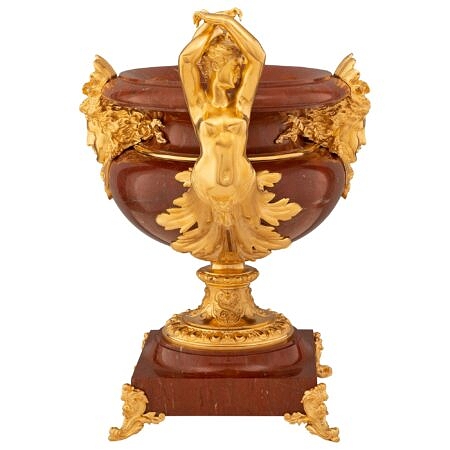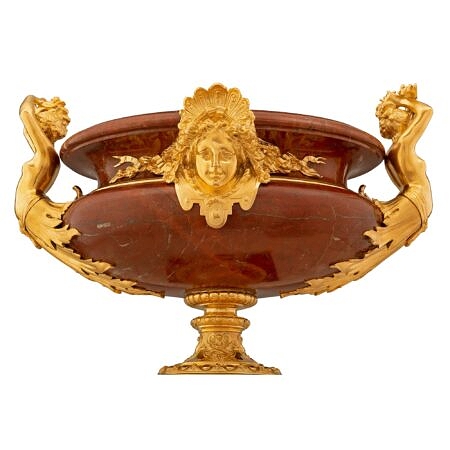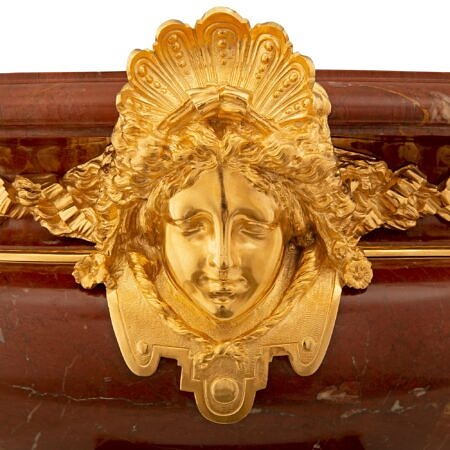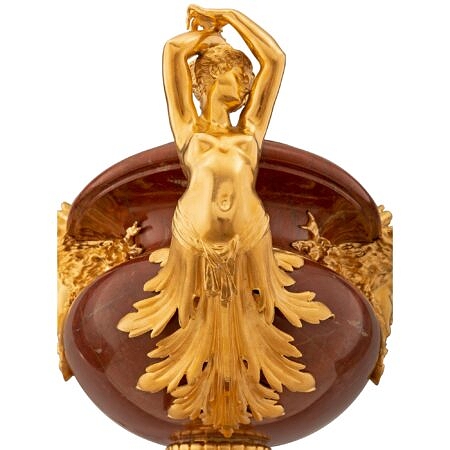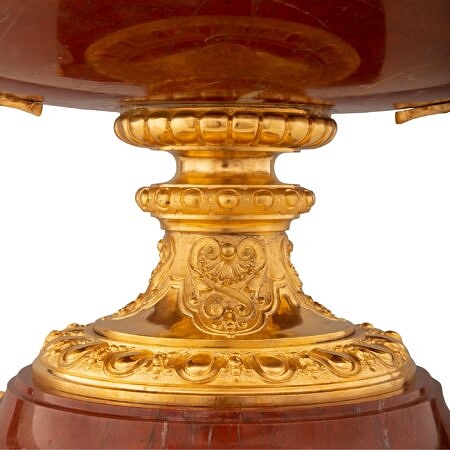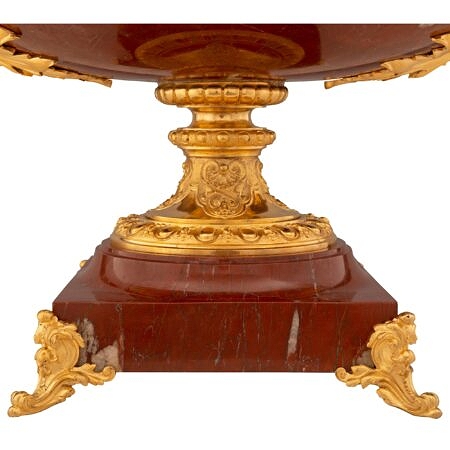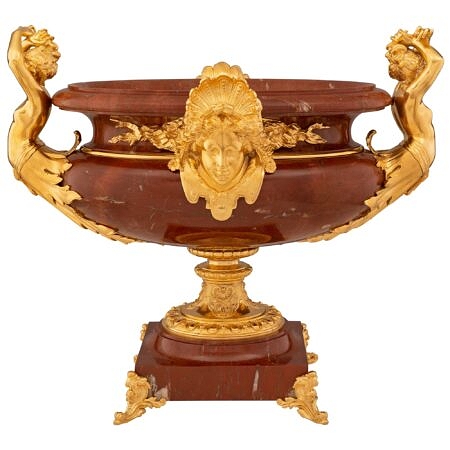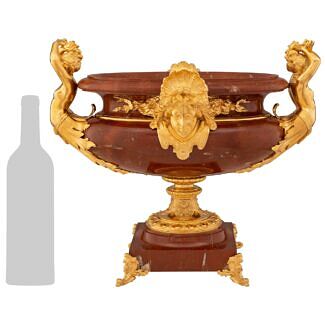A French 19th century Louis XVI st. Belle Époque period Rouge Griotte marble and ormolu centerpiece attributed to François Linke
A stunning and extremely high quality French 19th century Louis XVI st. Belle Époque period Rouge Griotte marble and ormolu centerpiece attributed to François Linke. The centerpiece is raised by a square Rouge Griotte marble base with fine scrolled foliate... — Read More
A stunning and extremely high quality French 19th century Louis XVI st. Belle Époque period Rouge Griotte marble and ormolu centerpiece attributed to François Linke. The centerpiece is raised by a square Rouge Griotte marble base with fine scrolled foliate feet and a beautiful mottled and socle shaped ormolu pedestal support with lovely foliate designs and a Les Oves designed band. The elegantly shaped body also displays an exceptional mottled design with a richly chased mask of a beautiful maiden at the center amidst charming ribbons and foliate designs. Impressive intricately detailed maidens extend up each side holding their hands over their heads amidst superb scrolled acanthus leaf movements in a striking satin and burnished finish. The centerpiece is also finished on the inside.
François Linke (1855-1946) Renowned 19th Century Parisian Ébéniste. Linke created historical interpretations of Louis XV and Louis XVI styles. He displayed at the Paris Universal Exhibition of 1900 where he received a gold medal. — Read Less
- Item # 12630
-
H: 17.5 in L: 20.25 in D: 12.25 in
H: 44 cm L: 51 cm D: 31 cm
- France
- 19th Century
- Marble/Stone, Ormolu
-
Belle Époque Period Read More,
Louis XVI st. Read More
(Belle Époque Period) -
Gaining its name from the optimistic and peaceful period of time between 1871 and World War I, Belle Epoque means “beautiful period”, and occurred during the era of the Third French Republic. This period of economic, colonial, and scientific prosperity brought with it a flourishing artistic climate with numerous literal, musical, theatrical, and visual masterpieces being created.
The Eiffel Tower, which was constructed between 1887 and 1889, served as the entrance to the World’s Fair held in Paris. That same year, the Moulin Rouge cabaret in Paris was founded and showcased the now more mainstream styles of performance including can-can dancing. Belle Epoque dancers and singers were Paris celebrities and became immortalized by the poster arts of Toulouse-Lautrec.
Leading up to this period in 1865, the American Civil War was coming to a close, with France proposing to construct the Statue of Liberty as a joint effort with the United States. France would be responsible for the statue, with America constructing the pedestal. Created to celebrate the nation’s success in building a viable democracy, the statue would stand as a symbol of friendship between the French and American people.
(Louis XVI st.) -
Also known as Louis Seize, Louis XVI's style is a style of architecture, furniture, decoration, and art created during Louis XVI’s 19-year reign in France, just before the French Revolution.
Thought to be a reaction and juxtaposition to the prior more elaborate styles, Louis XVI style developed at the end of the Baroque Period and continued until the birth of French Neoclassicism.
King Louis XVI showed little enthusiasm for the old world styles of the Baroque Period and he sought out a create a new “beau ideal” that focused on the purity and grandeur of Ancient Romans and Greeks.
Inspired by Ancient Roman architecture and art, distinct features of the Louis XVI style are linear lines, small repeated motifs, floral medallions hanging from ribbons, acanthus leaves, urns, dolphins, ram, and lion heads, and griffins.
Greco-Roman elements, often used in earlier and later French styles, were also quick common and included fluted and twisted columns, Caryathids, and corbels.
- François Linke Read More
François Linke (1855-1946) Renowned 19th Century Parisian Ébéniste. Linke created historical interpretations of Louis XV and Louis XVI styles. Early in his career his workshop supplied furniture for more established makers such as Jansen and Krieger Linke displayed at the Paris Universal Exhibition of 1900 where he received a gold medal for his exhibition. Linke's stand was the biggest show in the history of art furniture in the year 1900. Visitors to his stand included; the King of Sweden, king of Belgium, Prince Radziwill, the Prince, d’Arenberg and the President of France Emile Loubet, among many other counts and heiresses from the Americas.
At a time when other more established furniture businesses such as those of Beurdeley and Dasson were closing down, he made a huge investment in his stand and the furniture he supplied for it. By that time Linke’s worldwide reputation and expertise was unmatched by any of his peers. In 1906 Linke recieved the highest distinction of France; the Croix de la Légion d’Honneur. The Art Journal ‘Revue’ described Linke's style as 'Entièrement Nouveaux'. His characteristic sculptural gilt mounts reflected the influence of marquetry genius André-Charles Boulle.
Payment Plan Option Learn More Choose the payment plan option at checkout and customize this payment option with our team. Payment plans are flexible and items will ship once all payments are received.


